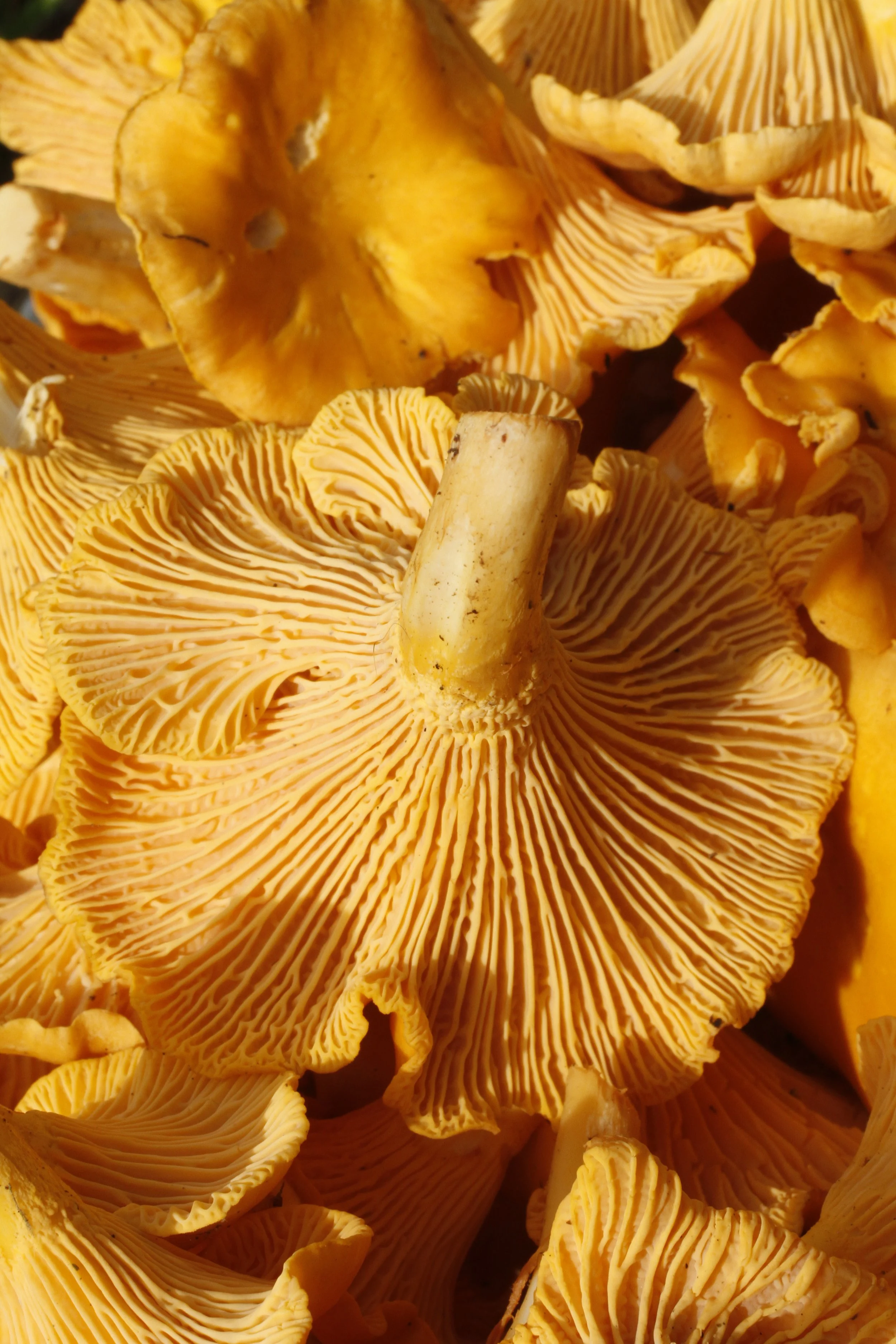Summer highlight
By Daniel Butler, author and forager
Chanterelles just have to feature in any forager’s ‘top ten’ mushrooms. These beautiful golden flutes start to emerge from the woodland floor in early summer and continue to flush after rain into early autumn when the first hint of frost signals the end of the season. This means they can crop from June until late October.
Chanterelles are rightly prized in the kitchen
Photo: author’s own
The peak of the season is generally July and August, but this is very variable thanks to weather conditions. Temperature, but particularly rainfall, are critical. This is because it is a mycorrhyzal mushroom which usually grows in association with shallow-rooted shrubby broadleafs. This means that unlike many other woodland species which get their water from the deep roots of their hosts, they are much more dependent on damp soil and leaf mould.
Chanterelles can be surprisingly well camouflaged
Photo: Author’s own
Despite their apparently garish yellow colouration, they are surprisingly difficult to find in the leaf mould beneath their favourite habitats of coppiced hazel, birch, oak and beech (it should be said, they will also co-habit with conifers further north in places such as Scotland and Scandinavia). Somehow the golden cups blend in perfectly with the woodland floor: not least because they are usually half-buried beneath the dead leaves and grass along the forest edge.
This year they have been very slow to emerge, despite the early warmth. This undoubtedly linked to the very dry conditions. The recent rain seems to have triggered activity, however, and last week I picked an easy 100g in five minutes – noting more just starting to ‘pin’.
Chanterelles work particularly well with eggs and cream - a chanterelle and feta quiche
Pic: Author’s own
Scouring suitable habitats for these lovely golden goblets is well worthwhile, for they are wonderful culinary ingredients, working particularly well with white meats, eggs and dairy.


